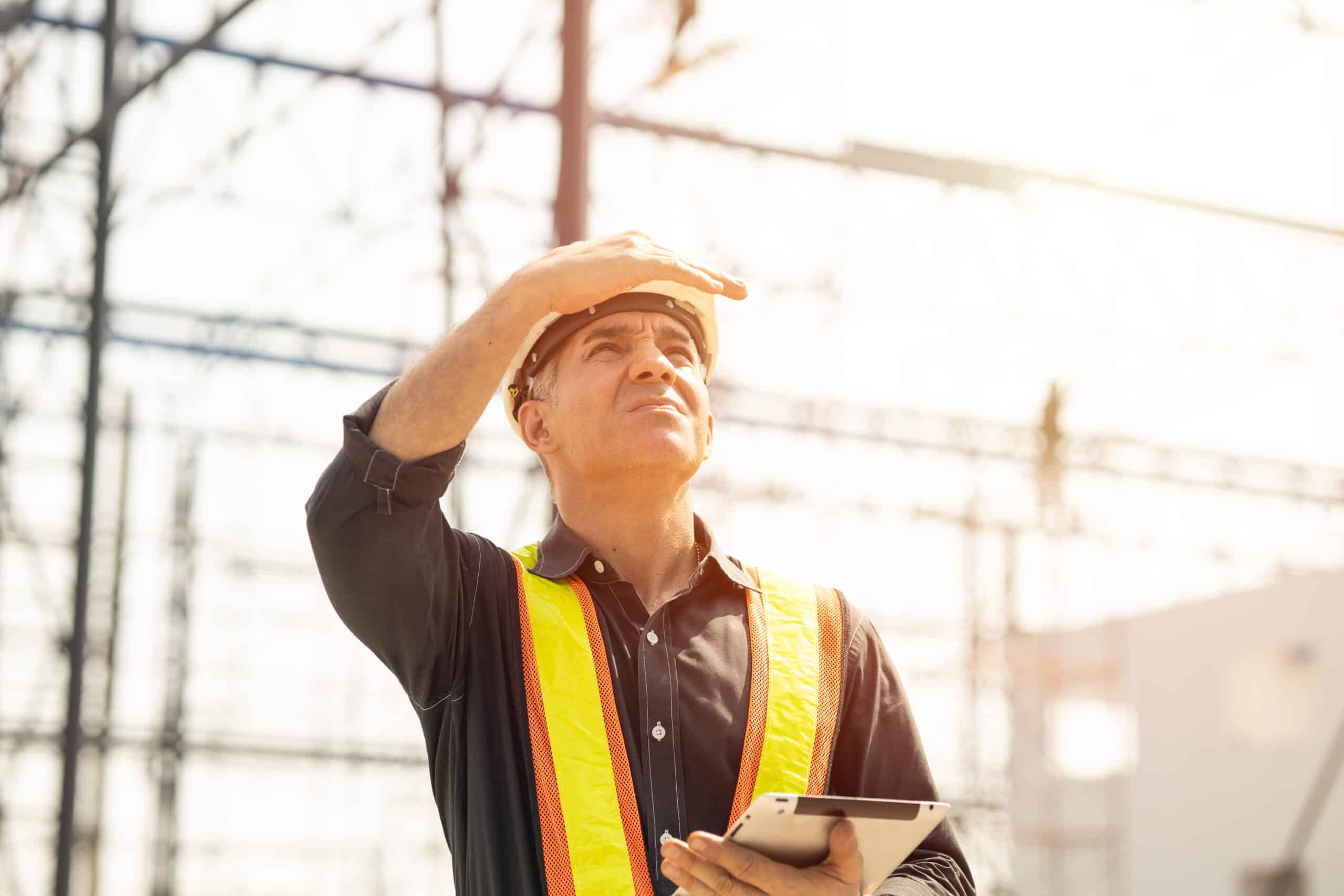How to Keep Construction Workers Safe in the Heat

It won’t be long before heatwaves are burning up the streets of New York City. While safety experts advise New Yorkers to avoid the outdoors and stay cool during periods of extreme heat, construction workers and outdoor laborers do not have this luxury.
Despite grueling heat and humidity, these dedicated workers perform complex tasks and heavy labor every summer. Combined with wearing Personal Protective Equipment (P.P.E.) and thick, wear-resistant clothing, the hot summer months put workers in these industries at a higher risk for heat-related illnesses and other types of construction accidents.
Heat-related illnesses can be life-threatening and result in irreversible damage to the body. Prevention of these conditions during extreme heat starts with understanding the types of heat-related illnesses commonly affecting outdoor workers, the symptoms to watch for, and steps to reducing heat exposure on the job site.
The Facts about Heat-Related Illnesses
From 2011 to 2019, the Bureau for Labor Statistics (B.L.S.) reported 144 occupational fatalities from exposure to environmental heat. Nearly 42% of these workers were engaged in construction, repair, and cleaning when injured, while almost 16% were involved in material handling operations.
Construction workers are already at a higher risk for injuries simply due to the nature of their work, but the heat can worsen matters. Construction involves using heavy equipment and hazardous materials that require workers to carry heavy loads and wear bulky gear with little ventilation. Additionally, because construction work is generally slotted for daytime hours, workers are consistently out in the sun during the hottest part of every day.
John Hopkins Medicine highlights three types of heat illnesses most commonly affecting construction workers and outdoor laborers:
- Heat Cramps: A mild form of heat-related illness that results in severe muscle cramping and spasms. Heat cramps can arise due to intense exercise, manual labor, or excessive sweating in elevated temperatures. Workers who suffer from heat cramps while performing dangerous tasks risk serious and fatal injuries if they are unable to remain safe.
- Heat Exhaustion: This mildly severe illness occurs when the body suffers a loss of water and salt. Heat exhaustion can occur when a worker performs tasks in high heat and humidity without adequate water intake, breaks, or shade. It’s typically a precursor for heatstroke when left untreated.
- Heatstroke: Heatstroke is the most severe and deadly form of heat-related illness. It occurs when the body has trouble regulating its temperature and becomes overwhelmed. When this occurs, emergency services and medical attention are required.
Heat rash is another heat-related condition that can cause issues with construction workers and outdoor laborers. This minor yet irritating condition often arises when covered or sensitive skin becomes overheated and cannot cool. It’s extremely common among occupations that use P.P.E. and results in severe discomfort and irritability during a workers’ day.
Health Consequences due to Heat-Related Illnesses
Extreme heat can lead to accidents on the worksite that are otherwise preventable in mild conditions. Overheating can cause the mind to become foggy and the body to feel weak. These symptoms can lead workers to stumble and use poor judgment during tasks and can prove deadly when performing high-risk jobs.
Falls are a common cause of injury during heatwaves. When occurring at elevated heights, on narrow surfaces, or surrounded by other hazardous materials or machinery, falls on the construction site can result in severe injuries such as traumatic brain injuries, broken bones, spinal cord injuries, or even death.
Inside the body, heat-related illnesses can cause even more significant harm. The Mayo Clinic identifies the following systems and conditions that can occur when heat illnesses impact the body:
- Heart: low blood pressure, cardiac failure, increased heart rate
- Nervous System: seizures, coma, headaches
- Abdomen: intestinal damage, severe vomiting, nausea
- Circulatory System: reduced oxygen to internal organs, blood clots
- Renal System: kidney damage or failure
- Muscular System: cramping, spasms, muscle failure
How to Keep Workers Safe
Heat-related illnesses occur quickly, sometimes within 15 minutes of exposure to extreme temperatures. Prevention and diagnosis are key to keeping workers safe in the summer heat. The Occupational Safety and Health Administration (O.S.H.A) advises all employers to train workers on identifying the symptoms of heat-related illnesses prior to the summer months to help them keep themselves and their coworkers safe. The most common symptoms for each heat-related illness include:
- Heatstroke: elevated body temperature, seizures, confusion, hot and dry skin to the touch, blue lips, blank stare.
- Heat Exhaustion: headache, dizziness, weakness, nausea, extreme thirst, elevated body temperature, profuse sweating
- Heat Cramps: muscle aches, difficulty moving, fatigue, weakness.
When a worker displays signs of a heat-related illness, especially those pertaining to heatstroke, seek medical treatment for the worker immediately. Heat illnesses require proper cool-down treatments by medical professionals to ensure no further harm is done to the body.
To help prevent the onset of heat-related illnesses, workers who perform their job under extreme should have access to the following on every shift:
- Water
- Frequent breaks
- Air-conditioned room or space to cool
- Shorter shifts during heatwaves
- Light clothing
- Custom-fit P.P.E
For more information on how to keep your worksite safe, visit the New York Department of Health for free resources.
Pazer Epstein Jaffe Fein & Gozenput, P.C. Construction Accident Attorneys
At the law firm of Pazer Epstein Jaffe Fein & Gozenput, P.C., we have been fighting for New York City workers and victims of construction accidents for over 60 years. If you or a loved one has sustained a serious injury on a construction site, our experienced trial attorneys are here to help.
To speak to one of our attorneys for a free consultation, please fill out our online form or call 212-227-1212.
Related Posts
Categories